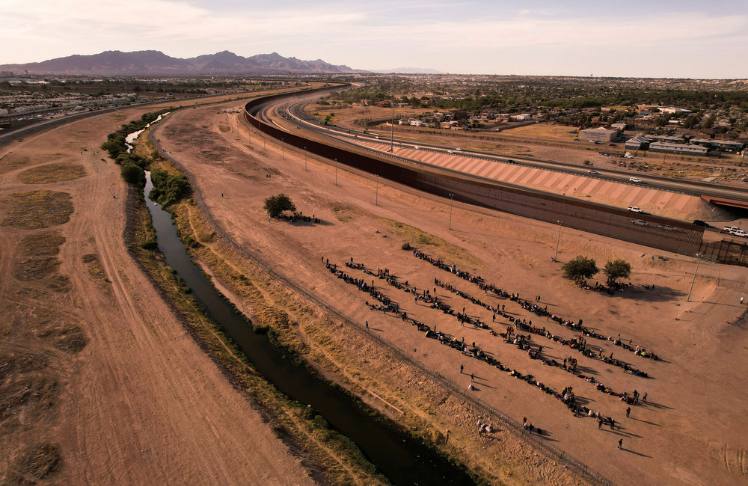
By Dakin Andone and Priscilla Alvarez, CNN
(CNN) — There are just hours left before the expiration of a pandemic-era public health restriction will significantly alter several years of US immigration policy, threatening chaos as an estimated tens of thousands of migrants mass near the US-Mexico border in anticipation.
Issued during the onset of the Covid-19 pandemic, Title 42 allowed authorities to swiftly turn away migrants at the US borders, ostensibly to prevent the spread of the novel coronavirus. But that will change at 11:59 p.m. ET Thursday, when the public health emergency and Title 42 are set to lapse.
Here’s how border crossings could be impacted after the order expires:
Title 8 will be back in effect
Title 42 allowed border authorities to swiftly turn away migrants encountered at the US-Mexico border, often depriving deprived migrants of the chance to claim asylum and dramatically cutting down on border processing time. But Title 42 also carried almost no legal consequences for migrants crossing, meaning if they were pushed back, they could try to cross again multiple times.
Once Title 42 lifts, the US government will return to a decades-old section of US code known as Title 8, which Homeland Security Secretary Alejandro Mayorkas has warned would carry “more severe” consequences for migrants found to be entering the country without a legal basis.
The Department of Homeland Security has repeatedly stressed in recent months that migrants apprehended under Title 8 authority may face a swift deportation process, known as “expedited removal” — and a ban on reentry for at least five years. Those who make subsequent attempts to enter the US could face criminal prosecution, DHS has said.
But the processing time for Title 8 can be lengthy, posing a steep challenge for authorities facing a high number of border arrests. By comparison, the processing time under Title 42 hovered around 30 minutes because migrants could be quickly expelled, whereas under Title 8, the process can take over an hour.
Title 8 allows for migrants to seek asylum, which can be a lengthy and drawn out process that begins with a credible fear screening by asylum officers before migrants’ cases progress through the immigration court system.
Title 8 has continued to be used alongside Title 42 since the latter’s introduction during the Covid-19 pandemic, with more than 1.15 million people apprehended at the southern border under Title 8 in fiscal year 2022, according to US Customs and Border Protection. More than 1.08 million people were expelled under Title 42 at the southern land border during that same period.
There’s also a new border policy
The administration is also rolling out new, strict policy measures following the lifting of Title 42 that will go into effect this week.
That includes putting into place a new asylum rule that will largely bar migrants who passed through another country from seeking asylum in the US. The rule, proposed earlier this year, will presume migrants are ineligible for asylum in the US if they didn’t first seek refuge in a country they transited through, like Mexico, on the way to the border. Migrants who secure an appointment through the CBP One app will be exempt, according to officials.
If migrants are found ineligible for asylum, they could be removed through the speedy deportation process, known as “expedited removal,” that would bar them from the US for five years.
The administration also plans to return Cubans, Venezuelans, Haitians and Nicaraguans to Mexico if they cross the border unlawfully, marking the first time the US has sent non-Mexican nationals back across the border.
Senior administration officials have stressed the actions are necessary to encourage people to use lawful pathways to come to the US. That includes parole programs for eligible nationalities to apply to enter the US and expanding access to an app for migrants to make an appointment to present themselves at a port of entry.
The State Department also plans to open about 100 regional processing centers in the Western hemisphere where migrants can apply to come to the US, though the timeline is unclear.
“We have, however, coupled this with a robust set of consequences for noncitizens who, despite having these options available to them, continue to cross unlawfully at the border,” a senior administration official told reporters Tuesday.
The-CNN-Wire
™ & © 2023 Cable News Network, Inc., a Warner Bros. Discovery Company. All rights reserved.















